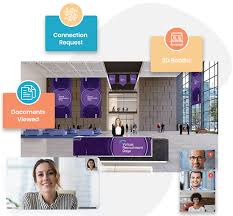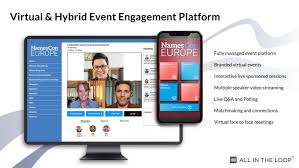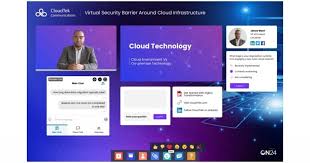The Power of Trade Show Platforms
Trade show platforms have revolutionized the way businesses connect with potential customers and partners. These virtual environments provide a unique space for companies to showcase their products and services, network with industry professionals, and generate leads.
One of the key benefits of trade show platforms is their accessibility. Attendees can participate from anywhere in the world, eliminating the need for travel expenses and logistical challenges. This opens up new opportunities for businesses to reach a global audience without leaving their office.
Moreover, trade show platforms offer a range of interactive features that enhance the attendee experience. From virtual booths and product demonstrations to live chat and networking sessions, these platforms simulate the in-person trade show experience in a digital environment.
For exhibitors, trade show platforms provide valuable data insights that can help optimize their marketing strategies. By tracking attendee engagement, booth traffic, and lead generation metrics, businesses can measure the success of their participation and make data-driven decisions for future events.
In conclusion, trade show platforms are a powerful tool for businesses looking to expand their reach, engage with prospects, and drive growth. As technology continues to evolve, these virtual environments will play an increasingly important role in the trade show industry.
Top 9 FAQs About Trade Show Platforms: Everything You Need to Know
- What is a trade show platform?
- How does a trade show platform work?
- What are the benefits of using a trade show platform?
- Can I customize my virtual booth on a trade show platform?
- Is it possible to interact with attendees in real-time on a trade show platform?
- What features should I look for in a trade show platform?
- How can I measure the success of my participation on a trade show platform?
- Are there security measures in place to protect data on trade show platforms?
- How do I choose the right trade show platform for my business?
What is a trade show platform?
A trade show platform is a virtual environment that enables businesses to showcase their products and services, connect with industry professionals, and engage with potential customers in an online setting. It serves as a digital counterpart to traditional trade shows, allowing attendees to participate from anywhere in the world without the need for physical presence. Trade show platforms offer interactive features such as virtual booths, product demonstrations, live chat capabilities, and networking opportunities to create a dynamic and engaging experience for exhibitors and attendees alike.
How does a trade show platform work?
A trade show platform functions as a virtual environment where exhibitors can showcase their products and services to a global audience. Attendees can access the platform from any location, using their devices to explore virtual booths, attend live presentations, engage in networking opportunities, and interact with exhibitors through chat features. Exhibitors create digital representations of their physical booths, complete with branding materials, product information, videos, and downloadable resources. The platform typically offers analytics tools to track attendee engagement and generate leads for exhibitors. Overall, a trade show platform replicates the experience of an in-person trade show in a digital space, providing a convenient and interactive way for businesses to connect with prospects and industry professionals.
What are the benefits of using a trade show platform?
Using a trade show platform offers a multitude of benefits for businesses looking to enhance their presence in the virtual event space. One key advantage is the ability to reach a global audience without the constraints of physical location, allowing companies to expand their reach and connect with prospects from around the world. Trade show platforms also provide interactive features like virtual booths and live chat functionalities, creating engaging experiences for attendees and fostering meaningful connections. Additionally, these platforms offer valuable data analytics that enable exhibitors to track attendee engagement, measure ROI, and refine their marketing strategies for future events. Overall, utilizing a trade show platform can significantly boost brand visibility, lead generation, and overall event success.
Can I customize my virtual booth on a trade show platform?
Many trade show platforms offer the flexibility for exhibitors to customize their virtual booths to align with their branding and marketing objectives. From uploading logos and banners to selecting color schemes and layouts, exhibitors can personalize their virtual booths to create a unique and engaging experience for attendees. Customizing your virtual booth allows you to showcase your products and services in a way that resonates with your target audience, helping you stand out from the competition and make a lasting impression. Be sure to explore the customization options available on the trade show platform you choose to maximize the impact of your virtual booth presence.
Is it possible to interact with attendees in real-time on a trade show platform?
Interacting with attendees in real-time on a trade show platform is not only possible but also highly encouraged. Many trade show platforms offer features such as live chat, video conferencing, and virtual networking sessions that enable exhibitors to engage with attendees in real-time. This interactive aspect of trade show platforms allows businesses to answer questions, showcase products, and build relationships with potential customers on the spot, creating a more personalized and engaging experience for all parties involved.
What features should I look for in a trade show platform?
When considering a trade show platform, it is essential to look for features that enhance the overall attendee experience and maximize engagement. Key features to consider include customizable virtual booths, interactive product demonstrations, live chat functionality for real-time communication, networking tools to facilitate connections between attendees and exhibitors, analytics capabilities for tracking performance metrics, and seamless integration with other marketing tools. By prioritizing these features, businesses can ensure a successful and impactful presence at trade shows in the digital realm.
How can I measure the success of my participation on a trade show platform?
Measuring the success of your participation on a trade show platform can be done through various key performance indicators (KPIs). Tracking metrics such as booth traffic, attendee engagement, lead generation, and conversion rates can provide valuable insights into the effectiveness of your virtual presence. Analyzing data on the number of interactions with your virtual booth, the quality of leads generated, and post-event follow-up responses can help you evaluate the impact of your participation and make informed decisions for future trade show engagements. By leveraging these quantitative and qualitative metrics, you can assess your performance, identify areas for improvement, and optimize your strategies to achieve greater success on trade show platforms.
Are there security measures in place to protect data on trade show platforms?
Ensuring the security of data on trade show platforms is a top priority for both organizers and attendees. Most reputable trade show platforms implement robust security measures to safeguard sensitive information, such as encryption protocols, secure login processes, and data access controls. Additionally, many platforms comply with industry standards and regulations to maintain data privacy and prevent unauthorized access. It is advisable for both exhibitors and attendees to familiarize themselves with the specific security features of a trade show platform before participating to ensure the protection of their data throughout the event.
How do I choose the right trade show platform for my business?
When selecting the right trade show platform for your business, it’s essential to consider your specific needs and objectives. Start by defining your goals for participating in trade shows, whether it’s lead generation, brand awareness, or networking. Next, assess the features and capabilities of different platforms, such as virtual booth customization, attendee engagement tools, and data analytics. Additionally, consider factors like ease of use, technical support, and pricing to ensure the platform aligns with your budget and resources. By conducting thorough research and evaluating various options based on your requirements, you can choose a trade show platform that best suits your business goals and enhances your overall event experience.










